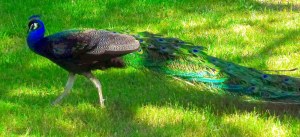Introduction of Asana
Asana refers to “a position in which one feels comfortable”, so it should not be a posture where undue force or pressure is exerted. If one feels uncomfortable with the posture, it means he or she is doing it wrong. No two human beings are the same, so there cannot be only one way to hold an Asana position.
Asanas have been designed with the aim of facilitating spiritual practice. How so?
“Human mind had infinite potentiality, so the development of the body and mind must be simultaneous. If the body does not catch up with the development of the mind, there will be problem. Therefore it important to understand the deeper relationship between body and mind for meditation practices; and to learn the right asana before higher meditation.” said my teacher.
As we all know Yoga originated from Anciet India, where cultural and spiritual aspect of life is strong. Each posture is aim at improving functions of the body, smoothening the energy flow within the body, thereby creating a body that allow one to meditate and gain concentration.
Many of Asana postures bear resemblance of certain animals, because the structures of the animal give it its characteristics or reflects the quality of the animals.
 For example, peacock pose (Mayurasana), you would notice peacocks show their feathers to attract, they are not shy about displaying their features. It has been said that peacock has a strong digestive system as it can digest poisonous snakes and scorpions. So the practice of Mayurasana is identified with the quality of the animal in solving a problem of digestive system and building confidence.
For example, peacock pose (Mayurasana), you would notice peacocks show their feathers to attract, they are not shy about displaying their features. It has been said that peacock has a strong digestive system as it can digest poisonous snakes and scorpions. So the practice of Mayurasana is identified with the quality of the animal in solving a problem of digestive system and building confidence.
Care must however be taken when practising the different asanas because each individual’s body is different and there may be certain weaknesses or medical conditions that make it unsuitable to practice certain post.
I would be learning the benefits and contra-indication of each asana during the course.
Having understood that the asana practice is really to facilitate spiritual advancement through meditation, the meditation practices is therefore an important part of yoga practice. I would slowly learn how the asana practice affects the body and the mind training process.

